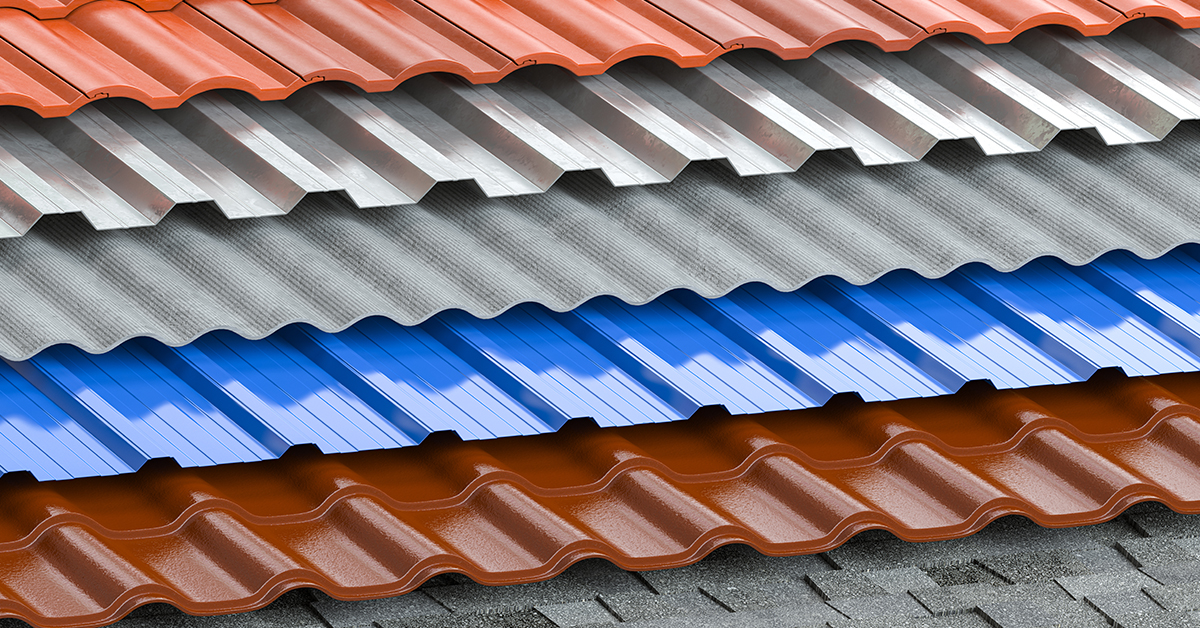Roofing Types: Pros and Cons

As many homeowners know, the options for roofs are endless. If you are in the market for a roof replacement, this guide of the pros and cons of different roofing types should shed some light on any questions you might have. As with anything, we have come to realize that there are pros and cons to weigh. Here, you will learn about all the advantages and disadvantages of multiple styles of roofs and roofing materials so that you can determine the best fit for your needs.
Types of roofing
- EPDM
- Flat Roofing
- Shingle Roofing
- Tile Roofing
- White Membrane Roofing
- Metal Roofing
EPDM
EPDM roofing is one of the most popular roofing options for long-term solutions. They are single-ply membranes and are one of the most sustainable and popular roofing options on the market.
- Pros
Lower cost compared to other roofing options
Eco-friendly
Fire-resistant
Long-lasting
Lower energy costs
- Cons
General installation costs
Could potentially be fragile in the wrong environment
Less curb appeal
Flat Roofs
Flat roofs are usually installed on large buildings and outbuildings. If you are considering using this type of roof on a residential building, it’s important to understand the advantages and disadvantages that it can bring.
- Pros
Easier when performing general maintenance
Easy access
Lower installation costs
Better for fire safety
Allows optimal use of space
Great for HVAC installation if placing on the roof
- Cons
Not good for drainage (this can lead to sitting, and potentially leaks along seams)
Lack of material options
No curb appeal for residential homes
Shingle Roofs
Shingle roofs are the most popular option for many homeowners. There are 2 types of shingle roof options; asphalt shingles and composition asphalt/fiberglass shingles.
Asphalt shingles are the most popular roofing material options. They can withstand extreme and fluctuating weather conditions.
Composition shingles are manufactured with glass fibers and mineral granules. These shingles are lighter than asphalt and less expensive. And for living in Texas, they provide great heat resistance.
- Pros
Affordable
Long-lasting (12-17 years)
Effective
Variety of color options (per your region)
Easy to install
- Cons
Perform low under extreme heat (causing cracking and fading of color)
Non-Environmentally friendly
Tile Roofs
This type of roofing is usually installed to complement specific home styles (the Mediterranean; etc). However, it’s becoming increasingly more popular than the traditional roof material/style.
Tile Roofing options include:
- Clay
- Shingle
- Shake
- Slate
- Concrete
- Composition Tile
- Pros
Weather-resistant
Reduction in energy costs
Minimal maintenance
Long-lasting (up to 50 years with proper maintenance)
Environmentally friendly
Pest-resistant
Several different options
- Cons
Heavy material
Can be expensive
Must be properly installed by a professional
Need to be cleaned to prevent dark streaking
White Membrane Roofs
White membrane roofing (TPO roofing) is a great option for homeowners and business owners alike looking for a more environmentally friendly option for their roof replacement.
- Pros
Quality protection
Durable
Environmentally friendly
Energy efficient
Inexpensive cost compared to other roofing options
Flexible material
UV resistant/heat reflective
- Cons
New to the market (they have not undergone the test of time)
Variations in quality (depending on your contractor)
Thickness disparities (lasting 10-20 years)
Surface cracks/flaws
Seams are visible due to roll size
Metal Roofs
Metal roofing has become increasingly more popular, over 750,000 homeowners in the United States chose metal roofing.
- Pros
Lasts 10-20 years
Increase resale value
Lower home insurance rates
Durable
Environmentally friendly
Energy efficient
Stylish
- Cons
Expensive
Incur damages such as denting
Higher noise level (some may not see this as a con)
If you are in the market for a new roof but don’t know where to start, give the pros at 1845RM a call! Our certified and highly experienced staff will lead you in the right direction,